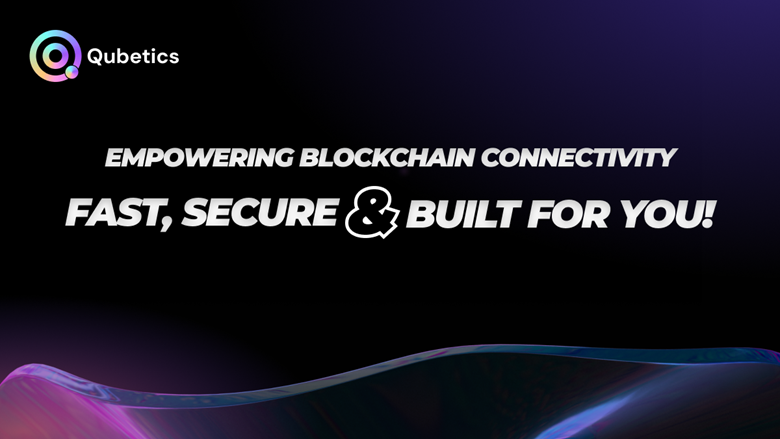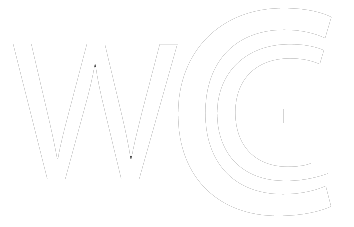Qubetics: The Next Big Crypto? Near Protocols Expansion And Polygon Price RallyWhats Driving the Hype?

Cryptos heating up again, and three names are making wavesQubetics, Near Protocol, and Polygon. Each offers something unique, but only one is stealing the spotlight as the next big crypto.
The Qubetics presale is setting records, now in Stage 22, with over 480 million tokens sold to 20,500+ holders, raising more than $13.3 million. With its cross-border transaction tech, its making global payments seamless and affordable. Meanwhile, Near Protocol is expanding its sharding capabilities, and Polygon is making big moves with Layer 2 scaling.
So, which one has the most potential? Lets dive in.
Qubetics ($TICS) The Future of Cross-Border Transactions & Blockchain Innovation
Imagine sending money internationally without high fees, long wait times, or middlemen taking a cut. Thats what Qubetics is solving. Traditional banking is slow and expensive, but Qubetics blockchain-powered cross-border transactions are changing the game.
Its presale is on fire. Right now, $TICS is priced at $0.08073, and analysts predict it could skyrocket after launch. Unlike older blockchains that struggle with high fees and slow speeds, Qubetics is built for real-world use casesfast, secure, and scalable.
But heres where it gets interesting. Qubetics isnt just about payments. With its QubeQode IDE, developers and businesses can build on the platform with zero coding experience. This opens doors for enterprises, freelancers, and even small businesses to transact globally without barriers.
With its presale in full swing, many investors are seeing this as the next big crypto. If Qubetics pulls off what it promises, it could reshape digital finance forever.
Near Protocol ($NEAR) Scaling Web3 with Sharding & Decentralization
Near Protocol is taking a different approach. Instead of focusing purely on transactions, its building a Web3 ecosystem thats developer-friendly, fast, and scalable.
One of its biggest strengths? Sharding. Nears Nightshade technology allows it to split its blockchain into smaller parts, making transactions super fast and cheap. Unlike Ethereum, which still struggles with congestion, Near is designed to handle millions of transactions per second.
Another reason investors are bullish on Near? Mass adoption. Major projects like Sweat Economy and Aurora are already using its tech. Plus, its attracting Web2 developers to build dApps without needing deep blockchain knowledge.
However, Near still faces competition. Other blockchains like Solana and Avalanche are also fighting for dominance in the same space. While Near is growing, it still needs more adoption and killer apps to solidify its position.
Polygon ($MATIC) The King of Layer 2 Scaling and Ethereums Best Friend
Polygon is already a household name in crypto, but its making fresh moves that have investors paying attention.
Why? Ethereum scaling. Ethereum gas fees are brutal, and Polygon helps fix that with Layer 2 scaling solutions that make transactions faster and cheaper.
Big brands are hopping on board. From Nike to Starbucks, major companies are launching NFT projects on Polygon, proving its not just for crypto nerdsits mainstream-ready.
And then theres the Polygon 2.0 upgrade, which aims to turn the network into a Value Layer for the internet, improving speed, security, and interoperability with other blockchains.
The Polygon price has been bouncing back, and as more projects integrate with Ethereum, demand for MATIC could keep rising. But with newer Layer 2 competitors popping up, can it maintain its dominance?
Cross-Border Transactions: The Future of Crypto Payments?
Blockchain payments are supposed to be fast and cheap, but lets be realmost still arent. High fees, slow speeds, and limited real-world adoption hold many projects back.
This is where Qubetics shines. By focusing on cross-border transactions, it removes the need for intermediaries, cutting costs and speeding up payments. Unlike traditional finance, where banks take a huge cut, Qubetics lets users send and receive funds instantly with near-zero fees.
For businesses, freelancers, and everyday users, this is a game changer. With Qubetics, global payments are no longer a hassle. As more people look for efficient, borderless financial solutions, crypto projects that deliver on this promise will lead the future.
Conclusion: Qubetics, Near, or PolygonWhich One Wins?
All three projects bring something valuable to the table. Near Protocol is scaling Web3 with sharding, making blockchain faster and more efficient. Polygon is still the go-to for Ethereum scaling, with strong partnerships and mainstream adoption. Qubetics is revolutionizing cross-border payments, making global transactions cheaper, faster, and easier.
But when talking about the next big crypto? Qubetics is the one to watch. With its presale selling out fast, real-world use cases, and cutting-edge tech, its positioned to disrupt traditional finance in a big way.
Nows the time to check out Qubetics before the presale endsbecause once its live, things could move fast.
For More Information:
- Qubetics: https://qubetics.com
- Telegram: https://t.me/qubetics
- Twitter: https://x.com/qubetics
FAQs
1. What makes Qubetics different from Near Protocol and Polygon?
Qubetics focuses on cross-border transactions, making international payments seamless and affordable. Near focuses on scaling Web3 with sharding, while Polygon is a Layer 2 scaling solution for Ethereum.
2. Is Qubetics a good investment?
With its presale raising $13.3 million+ and real-world use cases, many investors see it as a top contender for the next big crypto.
3. What is the current price of Qubetics ($TICS)?
Right now, $TICS is priced at $0.08073, with analysts predicting massive potential gains.
4. How does Qubetics enable faster global payments?
Its blockchain removes intermediaries, reducing fees and speeding up transactions compared to traditional banking systems.
5. When will the Qubetics presale end?
The presale is in Stage 22, and tokens are selling fast. Once all tokens are sold, prices will increase post-launch.
Disclaimer: TheNewsCrypto does not endorse any content on this page. The content depicted in this Press Release does not represent any investment advice. TheNewsCrypto recommends our readers to make decisions based on their own research. TheNewsCrypto is not accountable for any damage or loss related to content, products, or services stated in this Press Release.
Text source: TheNewsCrypto – Blockchain & Cryptocurrency News M










